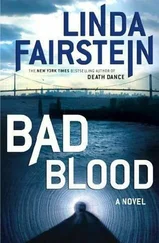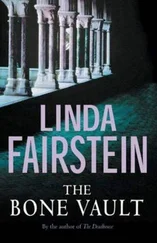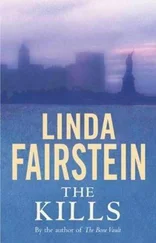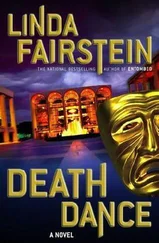Lowell Caxton managed to summarize a bit of art history while making clear his disdain for the legal profession. I got the point.
So far, the hallway lined with Impressionist paintings was as breathtaking as any gallery in the finest museums. Caxton opened the last door, which had been Denise’s bedroom. The contrast was stunning.
“A bit self-involved, would you say?” he asked rather facetiously.
The room was like a shrine to its former occupant, with almost every painting in it a portrait of Denise. “Gifts from the artists, of course. Thankful for her ability to turn their talents into gold, in some instances. Quite like alchemy. The Warhol is the great irony, in that he started this whole odyssey for her, without his ever knowing it.”
Displayed above the headboard of the king-size bed, covered in an exquisite set of antique linens with countless throw pillows layered on top, were the four-colored Warhol images of a younger Denise Caxton. The youthful bride with a swanlike neck and beauty queen smile was deserving of a few portraits, I conceded, but this accumulation was a bit frightening.
The three of us circled the space, looking at signatures and taking in the variety of styles. I recognized some of the names-Richard Sussman, Emilio Gomes, and Aneas McKiever among them-but Caxton pointed out the rest of those I had never encountered. There were Deni Caxtons fully clothed and bejeweled, and there were Deni Caxtons completely nude and erotically posed. There were torsos without heads and limbs, and there were heads without body parts.
“How’d she let this one slip in?” Chapman asked. He pointed at a yellow canvas, three feet square, with a small pink rectangle in the upper right corner.
Caxton laughed. “That is Denise, Detective. According to Alain Levinsky. Even she had a sense of humor about it. She managed to sell about a dozen Levinsky ‘portraits,’ Mr. Chapman. One each to Bardot, Trump, and Ted Turner-can’t remember who sat for the others. A few rectangles, a few oblongs, a few squares. Et voilà, a portrait.”
“This is all like ‘The Emperor’s New Clothes,’ if you ask me,” Chapman said.
“Precisely,” Caxton responded. “I couldn’t agree with you more. Denise mocked me for my traditional views-too representational, she used to argue, too old-fashioned. I wish P. T. Barnum had lived long enough to encounter this trend. Nowadays there are two or three suckers born every minute, if you ask me. He might have gone into partnership with Deni.”
Mercer was scouring the surfaces of the furniture-bedside tables, dresser top, lingerie chest-for any signs of notes or papers, names or phone numbers. But there was nothing loose and nothing casually laid about. Either Mrs. Caxton lived that neatly or Valerie had removed every jotting or message pad before we arrived.
“Would you-or the housekeeper-know whether any belongings are missing?” Mercer asked. “Jewelry, clothing, anything like-”
“I couldn’t begin to guess,” said Caxton. He stepped to the only other door in the room and pulled the handles back to reveal a walk-in closet, which was probably larger than half of the studio apartments in Manhattan. Clothes were assembled by category-dresses, slacks, suits, evening gowns-and then again by colors within those groupings. “The lesser jewels are kept in that safe at the rear. The more important things, from my mother and grand-mére, are all safeguarded in a vault. We’ll certainly check for you during the week.
“If you’ve seen enough here, we’ll go inside to Deni’s office.”
I wasn’t sure that I was ready to leave the boudoir, but we were given no choice, and the three of us dutifully followed Caxton, retracing our steps back up the corridor and into the next room.
Denise had constructed a thronelike encampment for herself at one end of this huge home office, centered around a fifteenth-century table that Lowell told us he had found in an Umbrian monastery. The table had become her desk and was ornamented only by a Fabergé clock. There were two chairs placed opposite Denise’s high-backed leather seat, and four more scattered around the room that matched that pair. Here the walls were decorated with paintings that were completely unfamiliar to me-all contemporary and none bearing signatures that I recognized.
Caxton walked behind the table and lowered himself into Denise’s chair, looking around the room as if for the first time from that perspective, and invited us to sit down and ask him whatever questions we wanted to pose about her.
“When do we reach the point at which you ask me who her enemies were, gentlemen?”
“We’re ready anytime you are. How long’s the list?” Chapman said.
“Depends on where you are in the art community, I would think. A disgruntled ‘artiste’ who thinks his dealer has taken too great a commission for his work. Just glance at the walls and see how many of those there might be. Then you’ve got the clients, who’ve found they’ve paid too much for a painting, on the dealer’s advice, that they neither like nor will be able to resell for anything remotely near the price they put out.
“There isn’t anyone in the business,” he went on, “who hasn’t been accused of selling a forged piece, by accident or design, over the years. And then there’s the current brouhaha in the auction houses, with the government charging sellers with rigging the bids to knock up the prices. On the surface, gentlemen, it’s a world of exquisite beauty and refinement. But it’s every bit as filthy and cutthroat as any other commercial enterprise, as soon as you get beneath the top layer of gouache.”
Mercer was leaning forward, balancing his pad on his knee while he reviewed subjects he wanted to ask Caxton about. “We’ll need a client list, then, as well as contact information for the painters she represented.”
“You’ll have to talk to her partner about that tomorrow at his office.”
“I thought you were her partner,” Mike said.
“As I mentioned, I set her up in the gallery in the Fuller Building originally. Without the Caxton name, I doubt she would have been able to sell the Mona Lisa, had it come on the market. I was the entrée to the uptown world in Manhattan- old money, large walls, deep pockets. But once she got involved in the New York scene, she had her own separate business-a thriving one at that-with a silent partner who mirrored her taste much more directly. Perhaps you’ve heard of him-Bryan Daughtry? They called their business Galleria Caxton Due.”
Mercer and I certainly knew Daughtry’s name. He had been a suspect in a very bizarre murder case in a neighboring county-beyond our jurisdiction but right up our alley. Chapman went for the bait. “Dead girl in the leather mask? That Daughtry?”
“Indeed, Mr. Chapman. That’s why I was so grateful that he was a silent partner. The scandal didn’t alarm Deni at all. Might even have helped, with her type of clientele. But none of the stigma ever stuck on Bryan. I haven’t spoken with him yet today, but he knows all the players in their professional life.”
“Does he have any part of your Fifty-seventh Street business?” I asked.
“Not a dime. Not a speck of paint.”
“Where was their operation? SoHo?”
“You’re not keeping up with the trends, Detective Wallace. SoHo is dead. It’s a commercial mall these days, not a creative zone any longer.”
The area south of Houston Street and north of Canal had been claimed by the avant-garde art community in the sixties and seventies. Abandoned lofts and warehouses, uninhabitable and overrun with rodents, had been renovated, populated, and gentrified by the struggling artists who were unable to afford midtown rents and needed the cavernous space to house their oversized canvases. The old meat district known as Washington Market became chic with its new infusion of hip locals and its redesignation as “Tribeca,” the triangle below Canal. By the late eighties, galleries there were being displaced by designer boutiques, chain store branches, and bed-and-bath shops with their ubiquitous supply of votive candles.
Читать дальше












